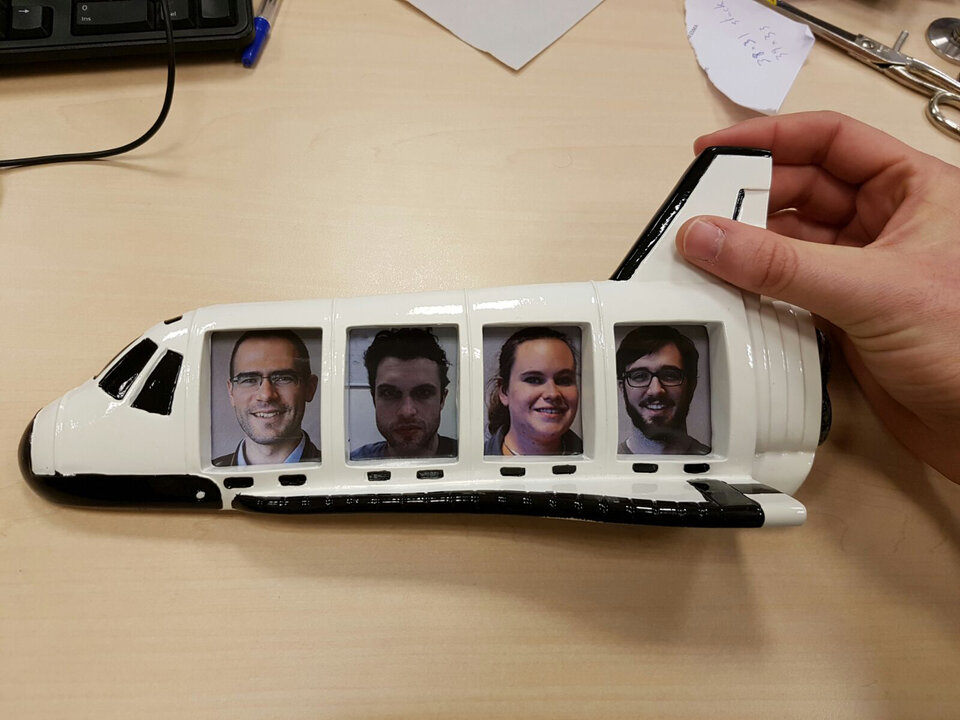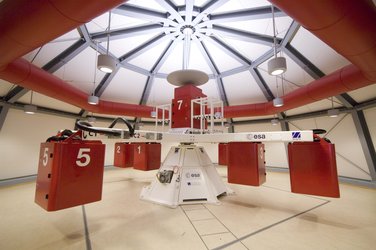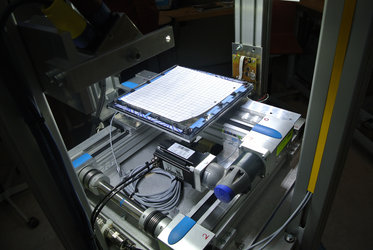Meet the teams: GrapheneX
The GrapheneX team is composed of four PhD students from the Delft University of Technology in the Netherlands. They will study the potential use of graphene-based materials as solar sails for spacecraft propulsion.
![]()
![]()
Graphene-based spacecraft sail for light-induced propulsion
![]()
![]()
| University | Delft University of Technology, the Netherlands |
| Endorsing professor | Prof. Herre van der Zant , Prof. Angelo Cervone, both Delft University of Technology, the Netherlands |
| Team | Santiago Jose Cartamil Bueno, Rocco Gaudenzi, Vera A. E. C. Janssen, Davide Stefani |

Light from the Sun or a laser beam can be used to transfer momentum to matter and displace low-mass objects. Space agencies have successfully tested the solar sail technology for low-Earth orbit applications, navigation control, and Solar System exploration, with IKAROS being the first demonstration of spacecraft with solar sails as a primary propulsion system in 2010. However, the thrust from radiation pressure is too low, and requires large areas of thin and low-mass sail material, which makes the engineering difficult, increases the chances of failure, and limits the overall travel velocity. Therefore, new materials with lower mass density, improved optical and mechanical properties, and with new functionalities, need to be developed to enhance the light-induced thrust.
Graphene, a one atom thick allotrope of graphite, has been extensively studied in the past decade, and the technology is ready to provide high quality large area graphene with properties close to the pristine material: very stiff and strong (Young's modulus of 1 TPa, tensile strength of 130 GPa), highly stretchable (up to 20%), and excellent electrical (350000 cm2 V–1 s–1) and thermal (2500 Wm−1K−1) conductor. The ultimate thinness and minimal mass density of graphene makes it ideal for mechanical systems. On the other hand, graphene is a bad optical reflecting material due to its thinness, although it has considerable optical absorption (2.3%, independent of wavelength) that causes direct momentum transfer from light. Moreover, literature reports an Auger-like effect when illuminating graphene with light that causes an electron emission with a momentum transfer larger than that of pressure radiation and wavelength-dependent.
The GrapheneX team will study the potential use of graphene-based materials as a solar sail. They will measure the light-induced displacement of weightless samples (1-5 mg) consisting of a graphene-based material on holey TEM grid in high-vacuum and low-gravity. By using high-power lasers of different wavelengths, they will determine the physical mechanism behind the thrust and demonstrate the proof of concept of a graphene-based solar sail.






